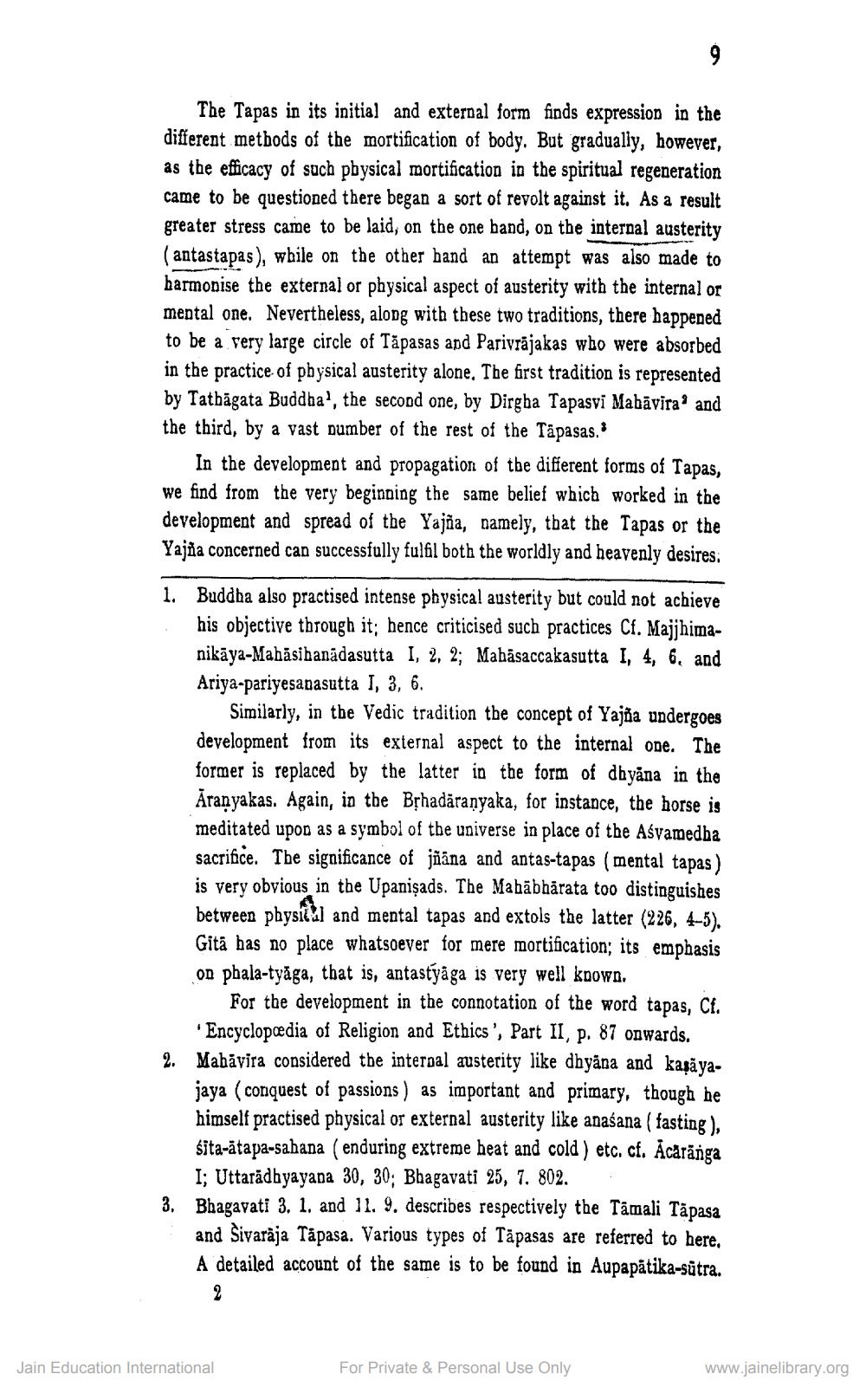________________
The Tapas in its initial and external form finds expression in the different methods of the mortification of body. But gradually, however, as the efficacy of such pbysical mortification in the spiritual regeneration came to be questioned there began a sort of revolt against it. As a result greater stress came to be laid, on the one band, on the internal austerity (antastapas), while on the other hand an attempt was also made to harmonise the external or physical aspect of austerity with the internal or mental one. Nevertheless, along with these two traditions, there happened to be a very large circle of Tāpasas apd Parivrājakas wbo were absorbed in the practice of pbysical austerity alone. The first tradition is represented by Tathāgata Buddha', the second one, by Dirgba Tapasvi Mabāvīra and the third, by a vast number of the rest of the Täpasas.
In the development and propagation of the different forms of Tapas, we find from the very beginning the same belief which worked in the development and spread of the Yajia, namely, that the Tapas or the Yajña concerned can successfully fulfil both the worldly and heavenly desires:
1. Buddha also practised intense physical austerity but could not achieve
his objective through it; hence criticised such practices Cf. Majjhimanikāya-Mahasibanādasutta I, 2, 2; Mabāsaccakasutta I, 4, 6, and Ariya-pariyesapasutta I, 3, 6.
Similarly, in the Vedic tradition the concept of Yajna undergoes development from its external aspect to the internal one. The former is replaced by the latter in the form of dhyāna in the Āranyakas. Again, in the Brhadāranyaka, for instance, the horse is meditated upon as a symbol of the universe in place of the Asyamedba sacrifice. The significance of jñāna and antas-tapas (mental tapas) is very obvious in the Upanişads. The Mahābhārata too distinguishes between physical and mental tapas and extols the latter (226, 4-5). Gitá has no place whatsoever for mere mortification; its emphasis on phala-tyāga, that is, antastyaga is very well known.
For the development in the connotation of the word tapas, Cf.
Encyclopædia of Religion and Ethics ', Part II, p. 87 onwards. 2. Mabăvira considered the internal austerity like dhyāna and kapāya
jaya (conquest of passions ) as important and primary, though he himself practised physical or external austerity like anaśana ( fasting), sita-ātapa-sabana ( enduring extreme heat and cold ) etc. cf. Ācāränga
1; Uttaradhyayana 30, 30; Bhagavati 25, 7. 802. 3. Bhagavati 3. 1. and 11. 9. describes respectively the Tamali Tāpasa
and Sivarāja Tāpasa. Various types of Täpasas are referred to here. A detailed account of the same is to be found in Aupapatika-sútra.
Jain Education International
For Private & Personal Use Only
www.jainelibrary.org




